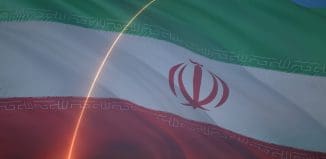Massive U.S. missile defense move
This post is also available in:  עברית (Hebrew)
עברית (Hebrew)
 Israel has been deploying a multi layered anti rocket- missile defense system after identifying the growing threats. Now it seems this trend is widening with the U.S. the first to make a move. The United States is bolstering the country’s missile defense after a series of explicit nuclear threats from North Korea. The Pentagon will announce Monday that it is deploying fourteen additional ground-based interceptors at missile silos in Alaska and California.
Israel has been deploying a multi layered anti rocket- missile defense system after identifying the growing threats. Now it seems this trend is widening with the U.S. the first to make a move. The United States is bolstering the country’s missile defense after a series of explicit nuclear threats from North Korea. The Pentagon will announce Monday that it is deploying fourteen additional ground-based interceptors at missile silos in Alaska and California.
Fox News reports that the additional interceptors on the West Coast would bring the total number of interceptors to forty-four, a number which was part of the ballistic missile defense plan of the Bush administration. The Obama administration halted the deployment of the additional interceptors in 2009, leaving the total number at thirty.
Fox News notes that critics of the administration argue that by halting Bush’s original plan for deploying forty-four interceptors, and therefore making it necessary for the military to bring the dormant silos back on lines and complete building the necessary infrastructure, the Obama administration ended up wasting $205 million.
James Miller, undersecretary of defense for policy, last week offered a window into the administrations thinking when, in a speech to the Atlantic Council in Washington, D.C. shortly after North Korea publicly threatened a “pre-emptive” nuclear strike on the United States. He said: “North Korea’s shrill public pronouncements underscore the need for the U.S. to continue to take prudent steps to defeat any future North Korean ICBM.”
A couple of days later, announcing the completion of Missile Field Number One at Fort Greely, Alaska, Miller said, “we have the ability to swiftly deploy up to 14 additional ground-based interceptors if needed.” The other interceptors are deployed at Vandenberg Air Force Base in California.
An Obama administration official told Fox News that the North Korean threat is much different now from what it was in 2009. North Korea has continued testing nuclear weapons and longer-range delivery systems, and has also improved their mobile missile capability.
“What we were defending against (from North Korea) four years ago was a single rouge missile, now with the mobile missile developing you have got to be able to counter multiple missile threats … so you have to expand your capability.”






























